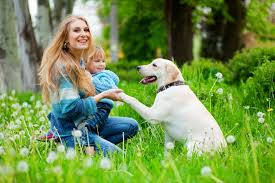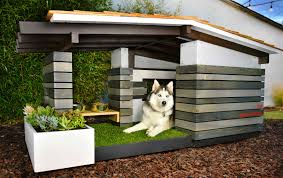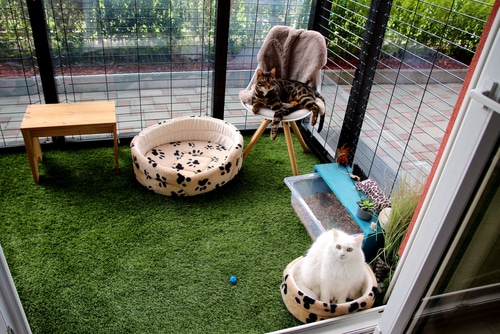Children and dogs can form wonderful bonds. However, ensuring safe interactions between them is crucial. With proper guidance and supervision, playtime can be enjoyable and safe for both. This guide explores how to help children and the family dog stay safe when they play together.
Understanding the Dynamics
Understanding the dynamics between children and dogs is the first step. Children often don’t recognize signs of discomfort in dogs. Teaching kids how to interact safely with dogs can prevent accidents. Dogs also need to learn how to behave around children.
Establishing Boundaries
Establishing boundaries helps ensure safety. Teach children to respect the dog’s space. Dogs need a quiet place to retreat when they feel overwhelmed. Supervise interactions to ensure both the child and the dog understand these boundaries.
Supervised Playtime
Always supervise playtime. Adult supervision is essential to prevent accidents and intervene if needed. Observing interactions helps identify and address potential issues. Never keep young kids and pets alone together.
Training the Dog
Training the dog is crucial. Basic commands like sit, stay, and come can prevent unwanted behavior. Consistent training helps dogs understand how to behave around children. Positive reinforcement encourages good behavior.
- Socialization
Socialize your dog from an early age. Uncover them to various conditions, people, and other animals . Well-socialized pets are less inclined to react aggressively. This helps them remain calm around children.
- Obedience Training
Enroll your dog in obedience classes. Professional training provides a strong foundation for good behavior. Training strengthens the connect between you and your dog . It also teaches them to follow commands reliably.
- Gentle Play
Encourage gentle play. Teach children to play calmly with the dog. Rough play can lead to accidental injuries. Use toys to engage both the child and the dog in safe activities
Teaching Children About Dog Safety
Educate children about dog safety. Understanding dog behavior and respecting boundaries is key. Here are some essential lessons for children:
- Recognize Body Language
Teach children to recognize dog body language. Signs of discomfort include growling, baring teeth, and a stiff posture. Encourage children to back off if they see these signs.
- Approach Gently
Instruct children to approach dogs gently and calmly. Running towards a dog or making sudden movements can scare them. Teach children to let the dog come to them first.
- Avoid Certain Actions
Teach children to avoid actions that can upset dogs. Pulling tails, ears, or fur can lead to bites. Also, suppress hugging or kissing canine, as some dogs don’t like this.
Creating a Safe Environment
A safe environment is crucial for both the child and the dog. Here are a few methods to create a safe space:
- Designate Play Areas
Designate specific play areas for the child and the dog. This helps in maintaining boundaries and preventing conflicts. Ensure these places are clear of hazards.
- Use Barriers
Use barriers like baby gates to separate children and dogs when necessary. This allows them to interact safely while providing space for the dog to retreat if needed.
- Implement Invisible Fencing
Consider using invisible fencing for dogs. This keeps dogs within safe boundaries and prevents them from wandering into unsafe areas. Invisible fencing is a great tool for maintaining safety in larger yards.
Encouraging Positive Interactions
Encouraging positive interactions fosters a healthy relationship. Here are some tips:
- Reward Good Behavior
Reward both the child and the dog for good behavior. Good encouragement encourages them to keep behaving effectively . Treats, praise, and affection work well.
- Structured Activities
Engage in structured activities like fetch or agility training. These activities provide exercise and mental stimulation. They also teach dogs to follow commands during play.
- Regular Breaks
Ensure regular breaks during playtime. Both the child and the dog need time to rest. Overstimulation can lead to accidents or aggressive behavior.
Managing Excitement Levels
Managing excitement levels is important. High energy can lead to accidents or bites. Here’s how to keep excitement in check:
- Calm Environment
Create a calm environment for play. Avoid loud noises or sudden movements. A calm setting helps both the child and the dog remain relaxed.
- Monitor Energy Levels
Monitor the energy levels of equally the kid and the dog. If either seems overly excited, it’s time to take a break. Encourage calm activities until they are both relaxed.
Addressing Issues Promptly
Address any issues promptly. If you notice signs of aggression or discomfort, intervene immediately. Here’s how to handle common problems:
- Aggressive Behavior
If your dog shows hostility, split them from the child. Identify the cause and address it. Consult a professional trainer if necessary.
- Fearful Reactions
If the dog seems fearful, provide a safe space for them. Encourage positive interactions gradually. Avoid requiring canine into uncomfortable situations.
Building a Strong Bond
Building a strong bond between the child and the dog ensures long-term safety and happiness. Here are some bonding activities:
- Shared Responsibilities
Involve the child in caring for the dog. Feeding, grooming, and walking the dog together builds a strong bond and teaches the child responsibility.
- Interactive Games
Play interactive games that both the child and the dog enjoy. Games like hide-and-seek or fetch are fun and engaging, and they also teach the dog to follow commands from the child.
- Training Together
Encourage the child to participate in training sessions. This can help your dog regard and tune in to the child and strengthens their relationship.
Consistency is Key
Consistency in rules and training is crucial. Both the child and the dog need to understand expectations. Here are a few strategies for maintaining uniformity:
- Set Clear Rules
Set clear rules for interactions. Ensure both the child and the dog understand these rules. Consistent reinforcement helps in following them.
- Regular Training
Regular training sessions reinforce good behavior. Practice commands and positive interactions frequently. Consistency in training ensures lasting results.
- Family Involvement
Involve the entire family in training and playtime. Consistent rules and expectations from all family members are important. This helps in maintaining a safe and happy environment.
Understanding Your Dog’s Needs
Understanding your dog’s needs helps in creating a safe environment. Each dog has unique requirements and preferences. Here’s how to cater to them:
- Recognize Stress Signals
Recognize signs of stress in your dog. Yawning, panting, and avoiding eye contact can indicate stress. Address these signals promptly to prevent issues.
- Provide Comfort
Assure your dog features a comfortable room to relax. A quiet area with their bed and toys helps them feel secure. Giving comfort reduces tension and promotes positive behavior.
- Adequate Exercise
Provide adequate exercise for your dog. Regular walks and playtime help in managing their energy levels. A well-exercised dog is less likely to exhibit unwanted behavior.
The Role of Professional Help
Professional help can be valuable. Trainers and behaviorists offer guidance on managing interactions. Here’s when to seek professional help:
- Behavioral Issues
Seek help for persistent behavioral issues. Aggression, fear, or anxiety may require professional intervention. A trainer or behaviorist provides effective solutions.
- Training Support
Professional trainers offer support in obedience training. They teach both the dog and the child proper interaction techniques. Training support ensures safe and positive interactions.
- Health Concerns
Consult a veterinarian for health concerns. Health issues can impact behavior. Regular veterinary check-ups ensure your dog is healthy and happy.
Conclusion
Ensuring safe playtime between children and the family dog requires understanding, training, and supervision. Establish boundaries, educate children, and create a safe environment. Encourage positive interactions and manage excitement levels. Address issues promptly and build a strong bond through shared activities. Reliability in rules and instruction is important to sustaining a safe and pleased relationship. Professional help offers valuable support for behavior and training. By following these guidelines, you can ensure that both children and dogs enjoy safe and happy interactions.


